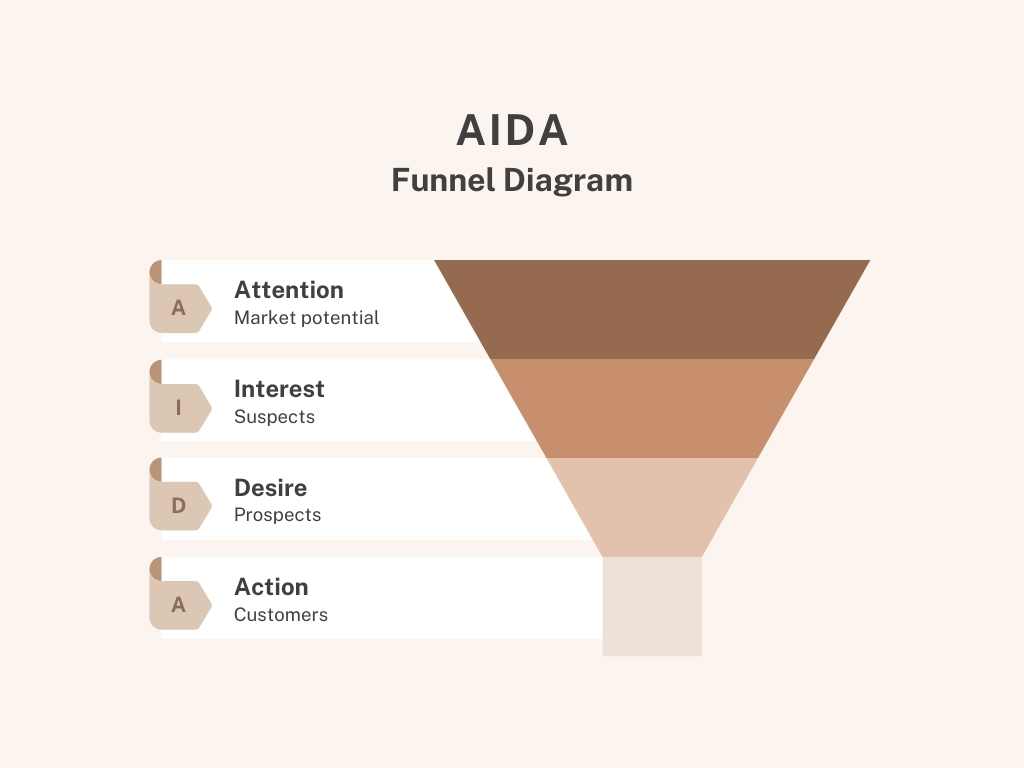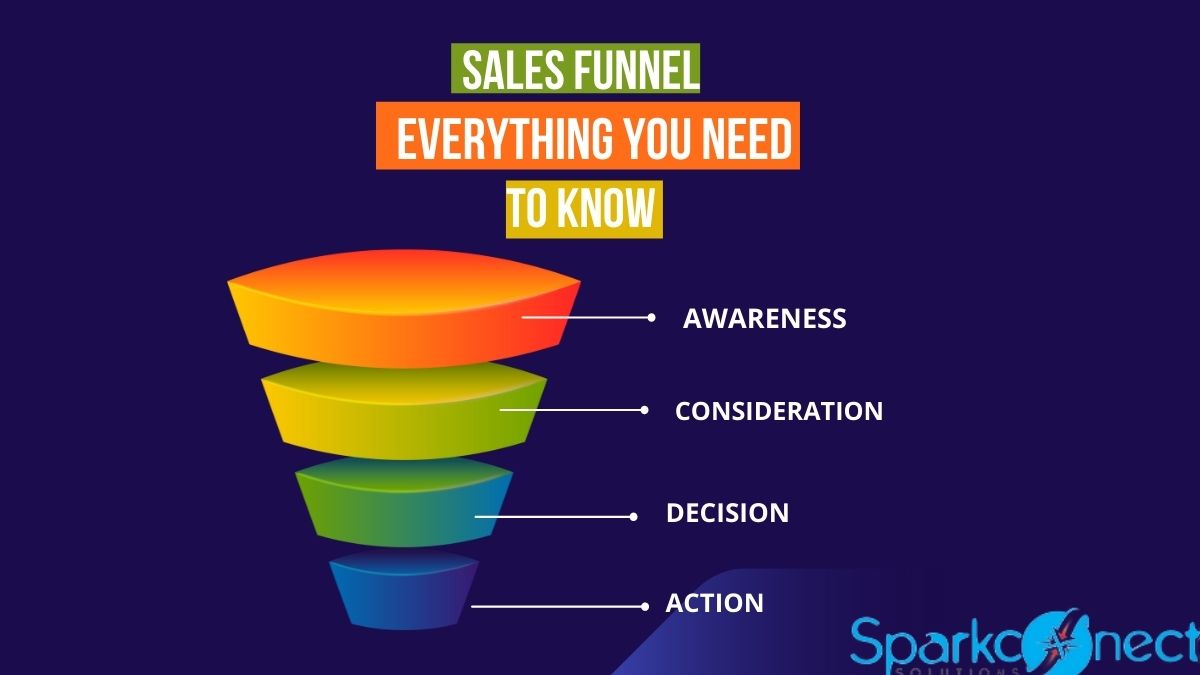Each stage of the sales funnel affects how your customers or consumers behave so you have to pay attention to each stage and what they mean for your business. As an online marketer, a sales funnel should be at the peak of your business if you want to make more sales and have returning customers with real lifetime value.
Whether you own a physical store or an online business, you need to create a sales funnel that will help you attract and convert more visitors into customers. Creating a sales funnel helps move prospects through the different stages of the sales process until they are ready to buy your products or services.
A sales funnel is a really important part of digital marketing and building one might be a little bit complicated. But here is good news, creating a sales funnel doesn’t have to be complicated and time-consuming. In this post, we’ll teach you everything you need to know about a sales funnel and how to build one.
What Is A Sales Funnel

A sales funnel refers to each step someone has to take in order to become your customer. It is a marketing term for the journey any potential customers go through on their way to purchase. It is usually made up of three-part. This is the top, middle, and bottom of the funnel, although these may vary depending on a company’s sales model.
The top of the funnel usually involves the marketing strategy put in place to attract prospects to your business. It can come in form of an advertisement through Google or Facebook or a landing page on your website.
There is also the middle of the funnel that involves all the parts of your sales process prior to the sale. This can be a tweet they saw or a blog post you wrote about your product, social media channels or even word of mouth and ads.
The bottom of the funnel involves the final purchase. This can be in terms of customers paying for clothes at checkout, customers subscribing to your premium plan or website customers entering their credit card info to complete a purchase.
How Does A Sales Funnel Work?
We are going to explain how each stage of the sales funnel works as a consumer goes from a visitor to a prospect to a lead to a buyer.
When a visitor becomes aware of your product through your advertising or learning about your brand on social media or word of mouth or Google searching a particular keyword that relates to your product. The person lands on your website through a Google search or social link. He or she is now a prospect. The visitor might also check out a few of your blog posts or browse your product listings. At some point in the stage, you offer the person a free shipping coupon or a discount or a newsletter for the person to sign up for your email list.
When the visitor fills in the form, they become a lead. You can then market to that person outside the box of your website through email, text or phone call.
You can now target them by offering them a discount, free shipping coupons, newsletters and other offers that will make them come back to your website.
As visitors go through the sales funnel, the funnel gets narrower. This is because there is always more prospect at the top of the funnel than buyers at the bottom. This means that many people will be interested in your product and services but not all will buy. This might be because of price, payment options, lack of chatbot and efficient customer service.
The Four Stages of the Sales Funnel
There are four sales funnel stages which go by the acronym AIDA. Which means Awareness, Interest, Decision, and Action (AIDA). Note that each stage requires a different strategy to reach out to your visitors and prospect so as to send the right message at the right stage of the journey.
1. Awareness
The first stage of the sales funnel is awareness. This is when a person first becomes aware of your product or service. This can be as a result of a tweet, a Facebook post shared by a friend, a Google search, Google ads, a blog post or something else entirely. In this case, your prospect becomes aware of your business and what you offer.
At this stage, consumers might buy immediately by clicking on a link and buying your product or subscribing to your premium plan if the timing is right. Here the consumer has already done his/her research and they are convinced that you are their best choice. However, it is more likely that you will have to convince the prospect to visit your store or website through various strategies.
The awareness stage is more of a courtship stage where marketers try to convince the prospect to visit your website and engage with your business.
2. Interest
At the interest stage, prospects are doing their research about your company, service and product and thinking over their options. This is a stage where you need to educate and educate them about your product and services. You don’t have to sell to them at this stage just make use of content that will educate them more about your product and services. Selling to them at this stage can turn them off and make them leave your website. The goal here is to establish your expertise, help the consumer make an informed decision, and offer to help them in any way you can.
3. Decision
At this stage of the sales funnel, the prospect is ready to buy your product and also considering a few options before making the purchase.
This is the time to make them an offer. You could offer them a free shipping coupon, a discount, a bonus product or other exciting offers making it irresistible that your lead can’t wait to take advantage of it.
Creating valuable content can help the prospect to make a decision.
4. Action
This is the last stage of the sales funnel. At this stage, the prospect finally buys your product or purchase your services. If the customer makes a purchase, they are now part of your business ecosystem.
Just because a customer reaches the bottom of the cycle and completes a purchase doesn’t mean your work is done. It is far from over because the process never ends. You need to focus on customer retention so the customer makes future purchases or refers to a family member or friend or leaves a positive review on your website.
Your marketing strategy at this stage should help to build customer loyalty. For example, thank the customer for the purchase, encourage them to provide feedback, and offer after-purchase customer service. Engage with them from time to time.
How to Build a Sales Funnel
Like I said earlier, creating a sales funnel is very essential for marketers that want to move a prospect from the awareness stage to the final stage. Marketers can then track the level of behaviour and engagement at each stage to see where the prospect is in the sales funnel and determine how well it is working.
Building a sales funnel depends on the type of business and industry. Follow these steps to create a sales funnel for your business:
1. Understand your customer
The best way for you to understand your customer or audience is by talking to them. The more data you gather about your audience, the more effective your sales funnel will become. Remember that you are not marketing to everybody, but to people who are interested in what you sell.
Knowing your audience will help you adjust your funnel to focus on strategies that will help you make sales. It will also give you insights that will lead you to adjust your product or service and make it better.
2. Engage your audience
One way to ensure that your sales funnel works is by engaging with your audience so they become aware of your business, product and services. This can be done by using content marketing to convert prospects into paying customers. There are different type of content which includes videos, images, infographics blogs and many more. Marketers should use this content to engage with their audience. You can write blog posts about your product and services to educate your audience about why they should choose your product. You can also create videos about your product and post them on your youtube channels and social media platforms. Share your blog post, videos and infographics on social media. Host contests and giveaways on your social media platforms. Run ads about your product and services to reach a large range of people.
3. Build a Landing Page
The landing page is very essential in building a sales funnel because it is where a prospect learns about your business, products and services. Remember that prospects arrive on your landing page through different channels like ads or links on a social media page, download an e-book, or sign up for a webinar, blog post etc.
Your landing page should describe the benefits of your product or service. Note that your landing page might be your only opportunity to impress prospects, so the copy should be strong and compelling. Since these people are still low in the sales funnel, your landing page should include a way to capture the prospect’s contact information so you can continue to communicate your value to them.
4. Create an Offer
When a prospect gets to your website, you need to give them a reason to stay or keep coming back. here you can make them an offer like a free coupon, free email letters, or discount in exchange for their email address. For example, you might offer a free e-book or whitepaper with useful and informative content.
5. Nurture the prospect through Email
One way to nurture your leads is by providing amazing content through emails and other digital channels. Nurture the prospect with content that educates them about your product or service. Do so regularly, but not too frequently. One or two emails per week should suffice.
Make sure the content addresses their key needs and overcomes any potential objections.

